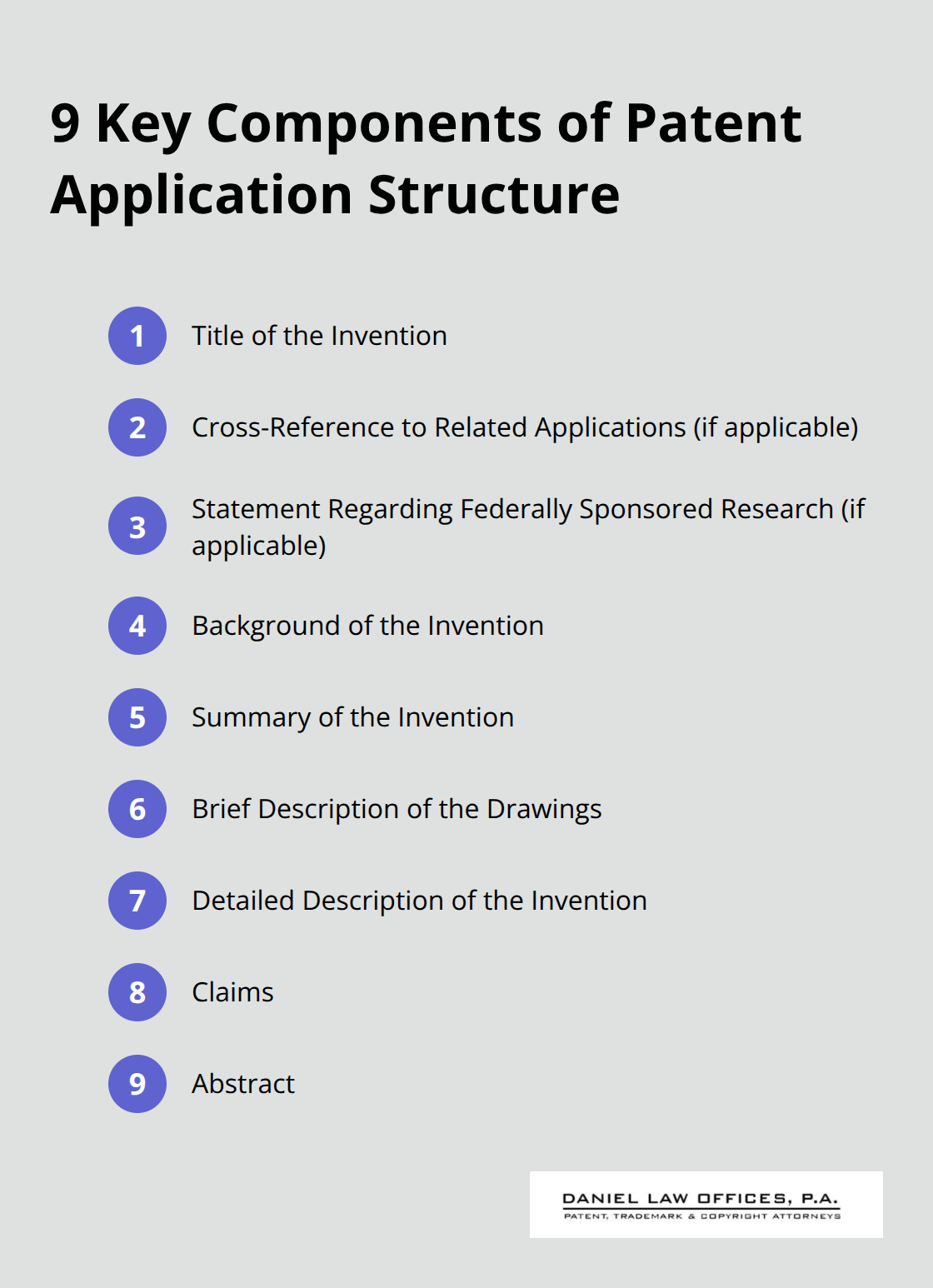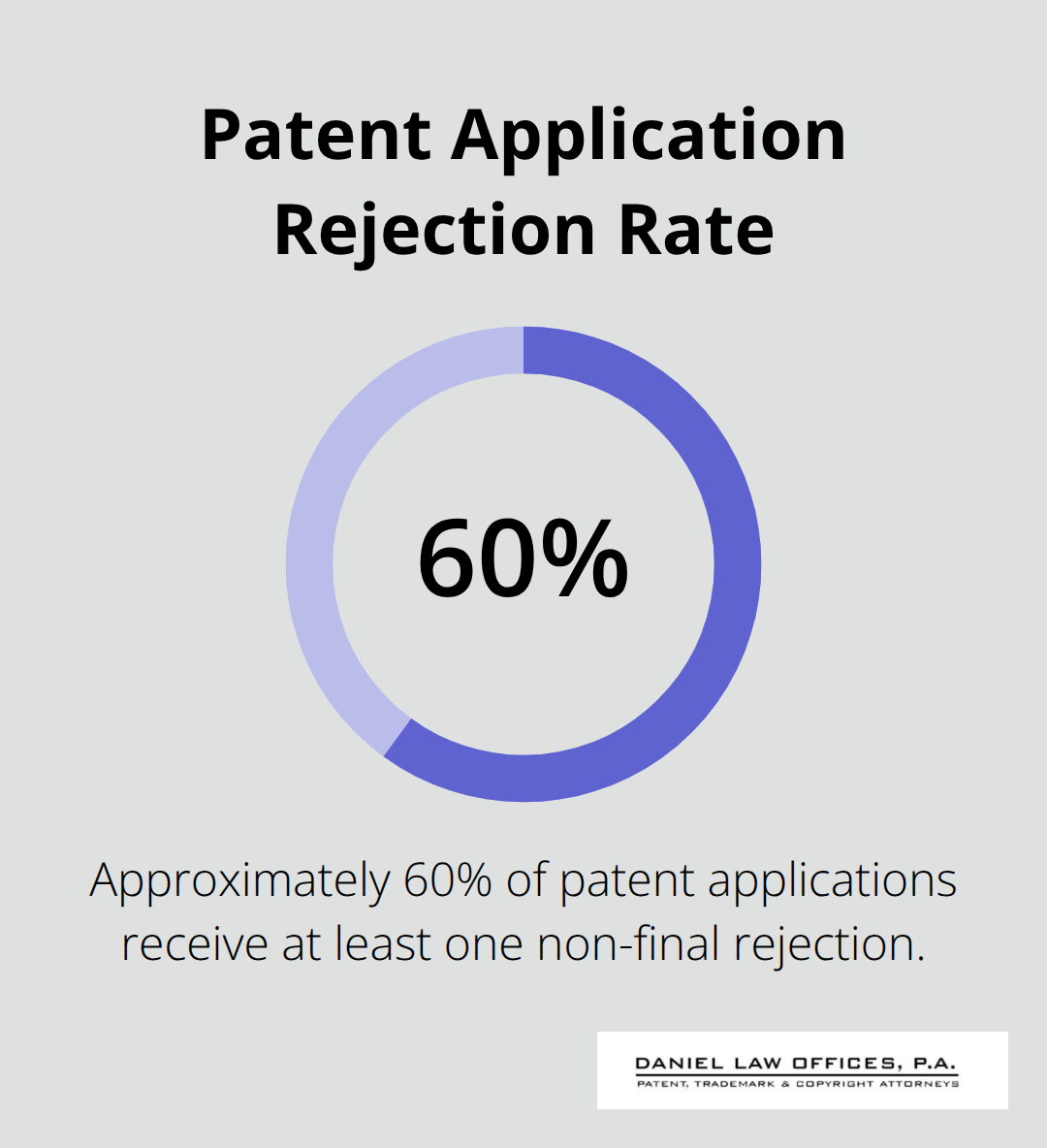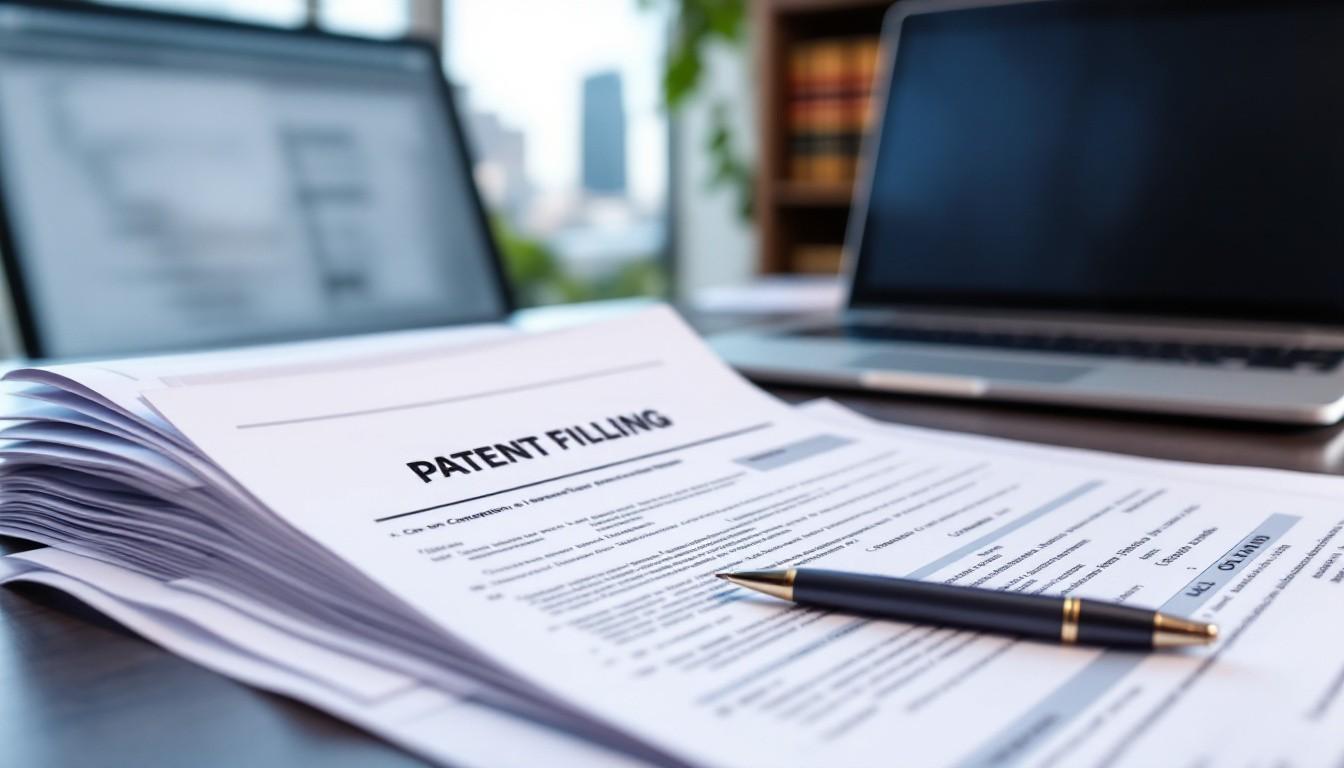Patent Filing Format in Orlando, Florida Key Elements to Include
At Daniel Law Offices, P.A., we understand the importance of proper patent filing format in Orlando, Florida. The success of your patent application hinges on adhering to specific guidelines set by the United States Patent and Trademark Office (USPTO).
This blog post outlines the key elements to include in your patent application and highlights common pitfalls to avoid. By following these guidelines, you’ll increase your chances of a successful patent filing and protect your valuable intellectual property.
Essential Components of a Patent Application in Orlando, Florida
Detailed Specification
The specification forms the core of your patent application. It must offer a clear and complete description of your invention. This section should explain how to make and use your invention in such detail that someone skilled in your field could recreate it. Include background information, a summary of the invention, and a thorough description of its operation and benefits.
Well-Defined Claims
Claims define the legal boundaries of your invention. They must be clear, concise, and supported by your specification. Applications with well-defined claims face 25% fewer initial rejections (according to USPTO data). We suggest you start with broad claims and then narrow them down to specific aspects of your invention.

High-Quality Drawings
Visual representations of your invention play a vital role. High-quality drawings can boost an application’s approval rate by 20% (as reported by the USPTO). Include multiple views and detailed diagrams with all parts clearly labeled and described. For complex inventions, you might want to consider hiring a professional patent illustrator.
Concise Abstract
The abstract provides a brief overview of your invention (typically 150 words or less). It should highlight the key technical aspects and novel features of your invention. While it’s the last thing you’ll write, patent examiners often read it first, so make it count.
A well-prepared patent application can protect your invention for up to 20 years. Each component of your application should be meticulously crafted to maximize your chances of approval and provide robust protection for your intellectual property.
The next section will discuss the specific formatting requirements set by the USPTO for patent applications. These guidelines ensure that your application is presented in a standardized format, making it easier for examiners to review and process.
How to Format Your Patent Application in Orlando, Florida
Page Layout and Font Specifications
The United States Patent and Trademark Office (USPTO) requires specific formatting for patent applications in Orlando, Florida. All text must be double-spaced with a 12-point font size. You should use Times New Roman, Arial, or Courier fonts. The margins must measure at least 1 inch on all sides of the page. These specifications (which ensure readability and provide space for examiner notes) are essential for a successful application.
Numbering and Organization
Your application requires consecutive page numbering, except for drawings. Start with page 1 and continue throughout the entire document. Number paragraphs as well, typically in the format [0001], [0002], etc. This system allows for easy reference during the examination process and in future communications about your patent.
Section Structure
Organize your application into clear sections with appropriate headings:
- Title of the Invention
- Cross-Reference to Related Applications (if applicable)
- Statement Regarding Federally Sponsored Research (if applicable)
- Background of the Invention
- Summary of the Invention
- Brief Description of the Drawings
- Detailed Description of the Invention
- Claims
- Abstract
Each section plays a vital role in presenting your invention comprehensively and clearly to patent examiners.

Drawings and Figures
Include high-quality drawings or figures to illustrate your invention. Label each figure clearly (e.g., “FIG. 1,” “FIG. 2”) and provide a brief description for each. Ensure that all text in the drawings is legible and that the figures are clear enough to be reproduced.
Claims Formatting
Format your claims as a single sentence, starting with a capital letter and ending with a period. Number each claim consecutively, using Arabic numerals. Independent claims should stand alone, while dependent claims should refer back to previous claims.
The next section will address common mistakes to avoid in patent filing format, helping you steer clear of potential pitfalls that could delay or derail your application process.
Common Patent Filing Mistakes to Avoid in Orlando, Florida
Inconsistent Terminology
One of the most frequent errors in patent applications is the use of inconsistent terminology. This can confuse examiners and potentially weaken your patent’s protection. For example, referring to a component as a “fastener” in one section and a “connector” in another might lead to ambiguity.
To prevent this, create a glossary of terms at the beginning of your application. This practice not only ensures consistency but also allows you to define terms specific to your invention. USPTO data suggests that applications with clear, consistent terminology are 15% more likely to be approved without major revisions.
Vague Descriptions and Broad Claims
Another common mistake is the use of vague language or overly broad claims. While it might seem advantageous to cover as much ground as possible, this approach often backfires. Vague descriptions can lead to rejections based on lack of enablement (meaning your application doesn’t provide enough detail for someone skilled in the art to recreate your invention).
Similarly, overly broad claims are more likely to be rejected due to prior art. The USPTO reports that approximately 60% of patent applications receive at least one non-final rejection, often due to overly broad claims. To avoid this, be specific in your descriptions and start with narrower claims that clearly distinguish your invention from existing technology.

Inadequate Drawings
Many inventors underestimate the importance of high-quality drawings. Poor or insufficient illustrations can significantly hinder your application’s chances of success. The USPTO states that applications with clear, detailed drawings are 20% more likely to be approved without major revisions.
Ensure your drawings are clear, properly labeled, and include multiple views of your invention. If your invention involves a process, consider including flowcharts. For complex inventions, it’s often worth investing in professional patent illustration services.
Insufficient Prior Art Search
A thorough prior art search is essential before filing a patent application. Failure to conduct a comprehensive search can result in wasted time and resources if your invention is not novel or non-obvious. The USPTO rejects about 8% of applications due to lack of novelty (according to their data).
Try to conduct an extensive search of existing patents, published patent applications, and other relevant literature in your field. This will help you identify potential obstacles and refine your invention before filing.
Improper Claim Structure
The structure and format of your claims are critical to the success of your patent application. Improperly structured claims can lead to rejections or limit the scope of your patent protection.
Each claim should be a single sentence, starting with a capital letter and ending with a period. Number your claims consecutively using Arabic numerals. Independent claims should stand alone, while dependent claims should refer back to previous claims. This proper structure (as required by the USPTO) will help examiners understand the scope of your invention more easily.
Final Thoughts
Proper patent filing format protects intellectual property in Orlando, Florida. The United States Patent and Trademark Office (USPTO) guidelines help inventors secure robust patent protection. Meticulous attention to detail in patent applications ensures clarity, consistency, and completeness in presenting your invention.
USPTO guidelines streamline the examination process and reduce rejection likelihood. This saves time and resources, potentially accelerating patent approval. A well-formatted application provides a solid foundation for defending future patent rights.
Patent filing format complexities highlight the value of professional assistance. At Daniel Law Offices, P.A., we guide inventors through the patent application process. Our team of registered patent attorneys possesses the knowledge to navigate intellectual property law intricacies (ensuring your innovative ideas receive deserved protection).

